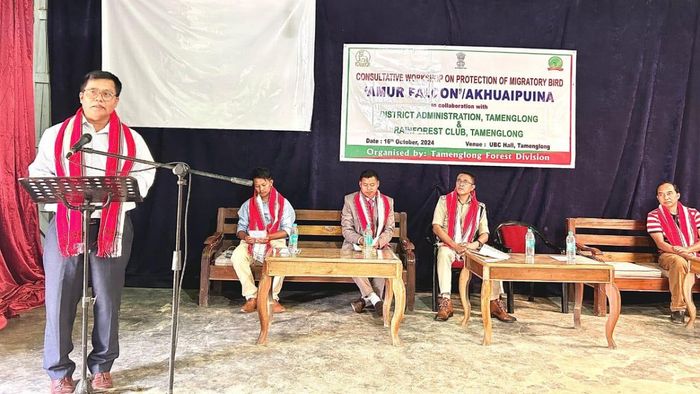Manipur: Tamenglong workshop spotlights Amur Falcon protection efforts
A workshop in Tamenglong, Manipur, highlighted efforts to conserve the Amur Falcon, a migratory bird facing threats during its stopover. Experts and community members discussed strategies for protection and emphasised the need for collaborative conservation efforts.

- Oct 16, 2024,
- Updated Oct 16, 2024, 3:40 PM IST
A workshop in Tamenglong, Manipur highlighted ongoing efforts to protect the Amur Falcon, a migratory bird known locally as Akhuaipuina. The Tamenglong Forest Division, in partnership with the District Administration and Rainforest Club, organised the event at the UBC Hall, drawing participants from eight villages, environmental activists, and local authorities.
Divisional Forest Officer KH Hitler Singh revealed plans for an upcoming Amur Festival next month. He also announced that two Amur Falcons would be geo-tagged this year to track their migration patterns, following previous tagging of birds named "Tamenglong" and "Manipur."
Singh cautioned against human consumption of the birds, citing disease concerns. He noted that the ongoing protection efforts started in 2015, but challenges still exist.
Superintendent of Police Lanmiyo Luikham urged the community to take pride in protecting the Amur Falcon. Just as Ukhrul cherishes the Shirui Lily, he urged the people of Tamenglong to embrace their role as guardians of this migratory species.
Environmental activist Salam Rajesh praised local conservation efforts, though he noted a gap in recognition. He mentioned that while Tamenglong has been actively protecting birds for years, it is often Nagaland that receives global credit for similar work. Rajesh also called for greater inter-village collaboration.
Advocate Daniel Kamsuan highlighted the legal obligations related to wildlife protection, referencing Article 51-A(g) of the Indian Constitution. He cautioned that failure to protect wildlife could result in fines of up to Rs 1 lakh and imprisonment for up to five years.
Mordecai Panmei, Director of Rainforest Club Tamenglong, highlighted the bird's ecological importance. Panmei explained that, since ancestral times, the bird has been referred to as Akhuaipuina or Raruai, meaning "Bird of the Evil." He shared that it was traditionally believed to bring a bountiful harvest, and as a result, it was never killed or eaten. The director added that the birds play a crucial role in controlling termite populations.